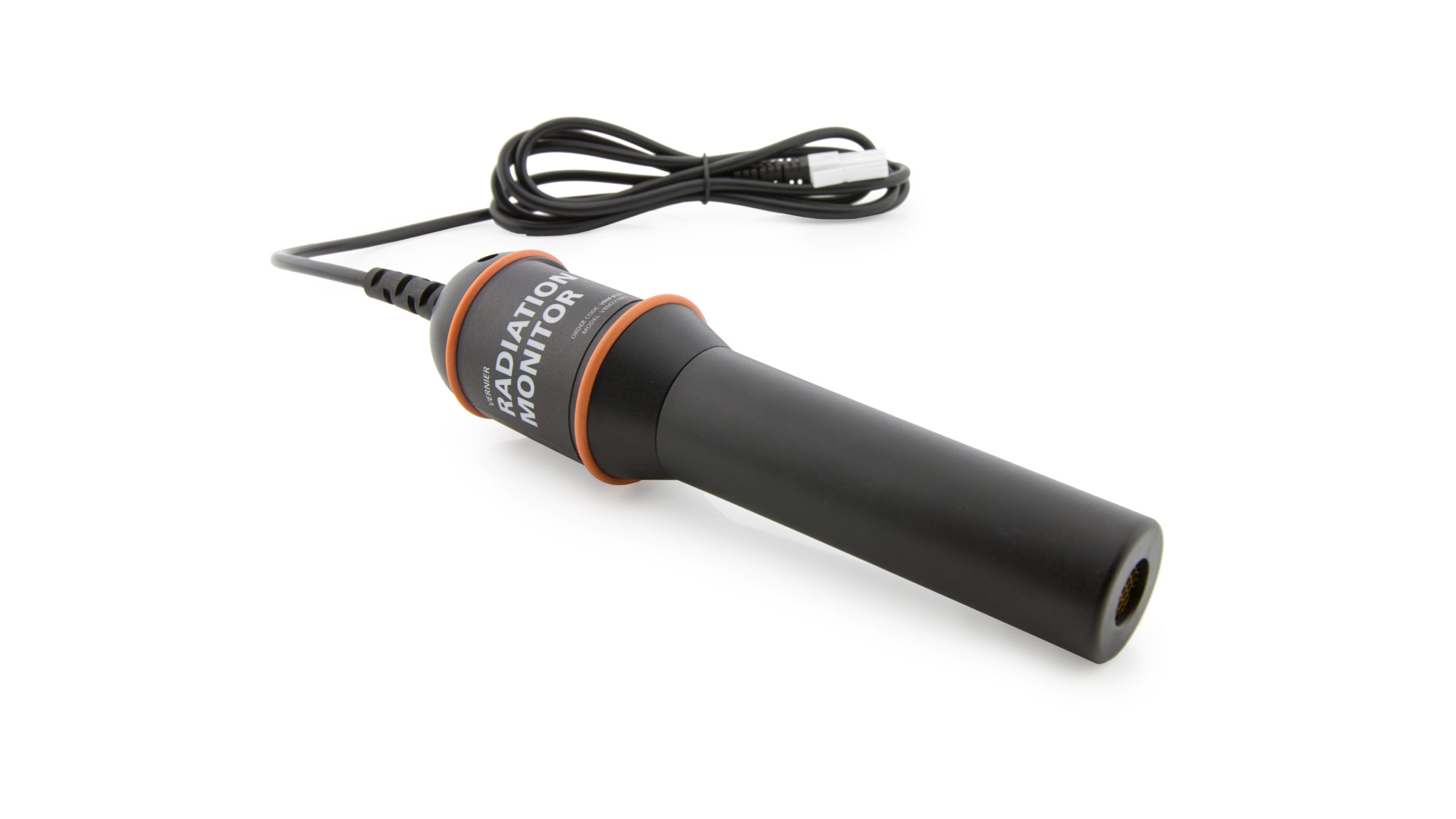Troubleshooting
- Primary Test: Connect the Radiation Monitor to an interface and launch the software (either the LabQuest App or Logger Pro on a computer). Verify that the Radiation Monitor is automatically identified. Next, place the Radiation Monitor near a radioactive source and collect data. Look for a small red LED on the body of the Radiation Monitor-it will flash with each count. The total counts will accumulate in the data-collection software.
Note: If you are using a LabPro interface, the Radiation Monitor will not automatically be identified. Choose Open from the File menu, and navigate to the “Probes and Sensors” file folder. Open the “Radiation Monitor” folder and select an experiment file. Before data collection, confirm that sensor is connected to the DIG/Sonic 1 port.
Usage Tips
- Tip 1: The Radiation Monitor measures total counts during the data-collection period, including any background radiation. A simple way to estimate the background radiation in your location is to run the Radiation Monitor without any radioactive source nearby for the same duration as your experimental trials. The total counts during that time interval will give you an idea of how much background radiation you can expect during each of your experimental trials.
- Tip 2: Alpha particles interact easily with other matter and may be intercepted by the air between the source and the Radiation Monitor. If you are using an alpha source, be sure to place the Radiation Monitor within 1/4″ of the source. Likewise, alpha particles (and low energy beta particles and gamma radiation) do not have the energy to penetrate the plastic body of the Radiation Monitor. Place your source close to the wire screen at the end of the tube for the best reading.
Additional Troubleshooting
- What are the similarities and differences between radiation monitors?
- How can you tell whether you have alpha, beta, or gamma radiation?
- Can I monitor the radioactivity of red Fiestaware with your Radiation Monitor?
- What sensors do not work with Go!Link?
- Where can I buy sources for nuclear radiation activities?
- What is the dead time of the radiation monitor?
Specifications
- Sensor: LND 712 (or equivalent) halogen-quenched G-M tube
⚬ mica end window thickness: 1.5 to 2.0 mg/cm² - Gamma sensitivity: 18 cps/mR/hr referenced to Co-60
- Temperature range: -20-50˚C
- Operating range: CPS 0-3,500
Calibration
None.
Warranty
The VRM-BTD has a 5 year overall warranty, with a 1 year warranty on the G-M tube. The G-M tube has a finite life span, and it is normal that it must be replaced after a few years (although some tubes last much longer).
- Tubes that fail within a year of purchase will be replaced under warranty.
- Tubes that fail after a year will be replaced for a fee of $89 plus shipping.
⚬ Sensors shipped prior to 6/20/2016 (no audio switch) cannot have the G-M tube replaced. - Tubes that are punctured will not be replaced under warranty.

